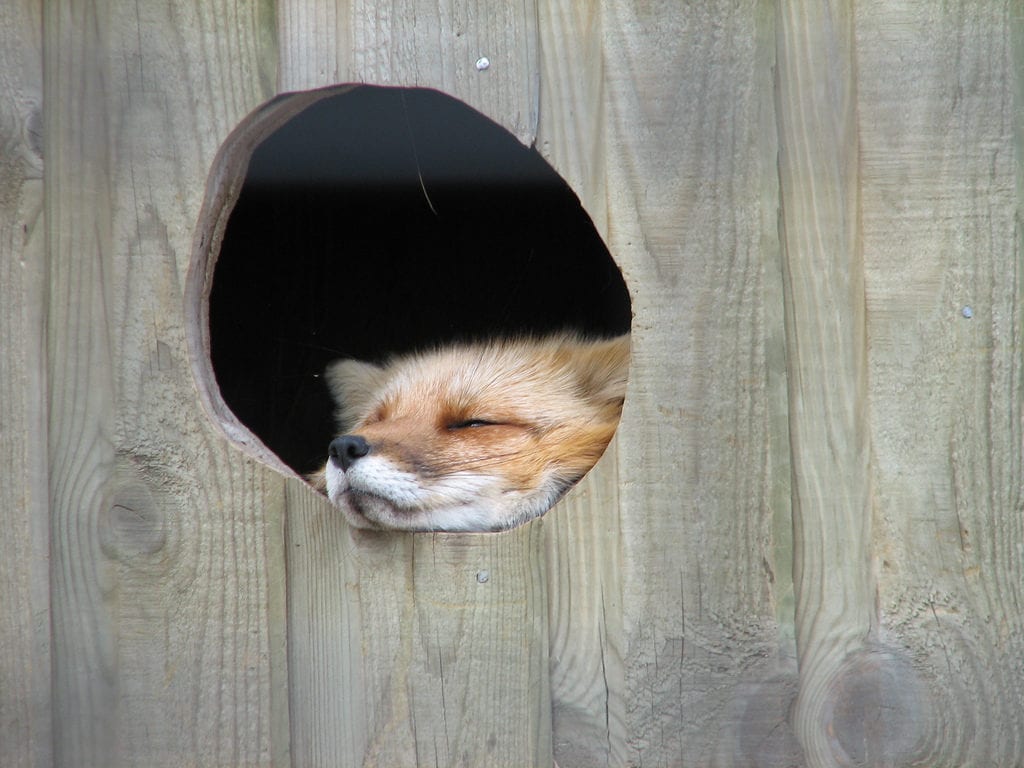
Over the coming months, Maine Audubon will feature posts by guest writers — including participants in the Maine Master Naturalist Program — on wildlife and naturalist topics. If you’d like to explore contributing a post, send an email to outreach@maineaudubon.org.
On January 28, I was sitting in my friend’s sun porch off Route 88 in Falmouth, admiring her indoor geraniums and watching birds come to the feeder beyond the deck – chickadees, Tufted Titmice, sparrows, a nuthatch, and a cardinal. Suddenly, a Red Fox appeared under the bird feeder and pounced on a Red Squirrel which it had spotted heading for the scattered seeds. The fox caught the squirrel in its mouth, but the squirrel wiggled vigorously and escaped.
I wondered why this fox was so bold, coming right up to the porch to hunt and later crossing it. Red foxes are solitary animals, except December through February, when they look for a mate to pair up. I wondered if this fox was trying to attract a mate by demonstrating its hunting prowess.
The fox paced to and fro for a while, giving us time to admire its red fur, white chest, and white tip on its bushy tail, which was as long as its body. The tail and the ears were darker than the body, the lower legs, and the feet. Then the fox walked away across the crusty snow. Ten minutes later, the fox reappeared behind a rock with a fat squirrel wiggling in its mouth. Then the squirrel stopped wiggling. The fox, with its catch dangling from its mouth, walked right across the deck, through the rose arbor, and around the corner of the house, and we did not see it again.
Nine turkeys watched from a distance. They did not act concerned.

